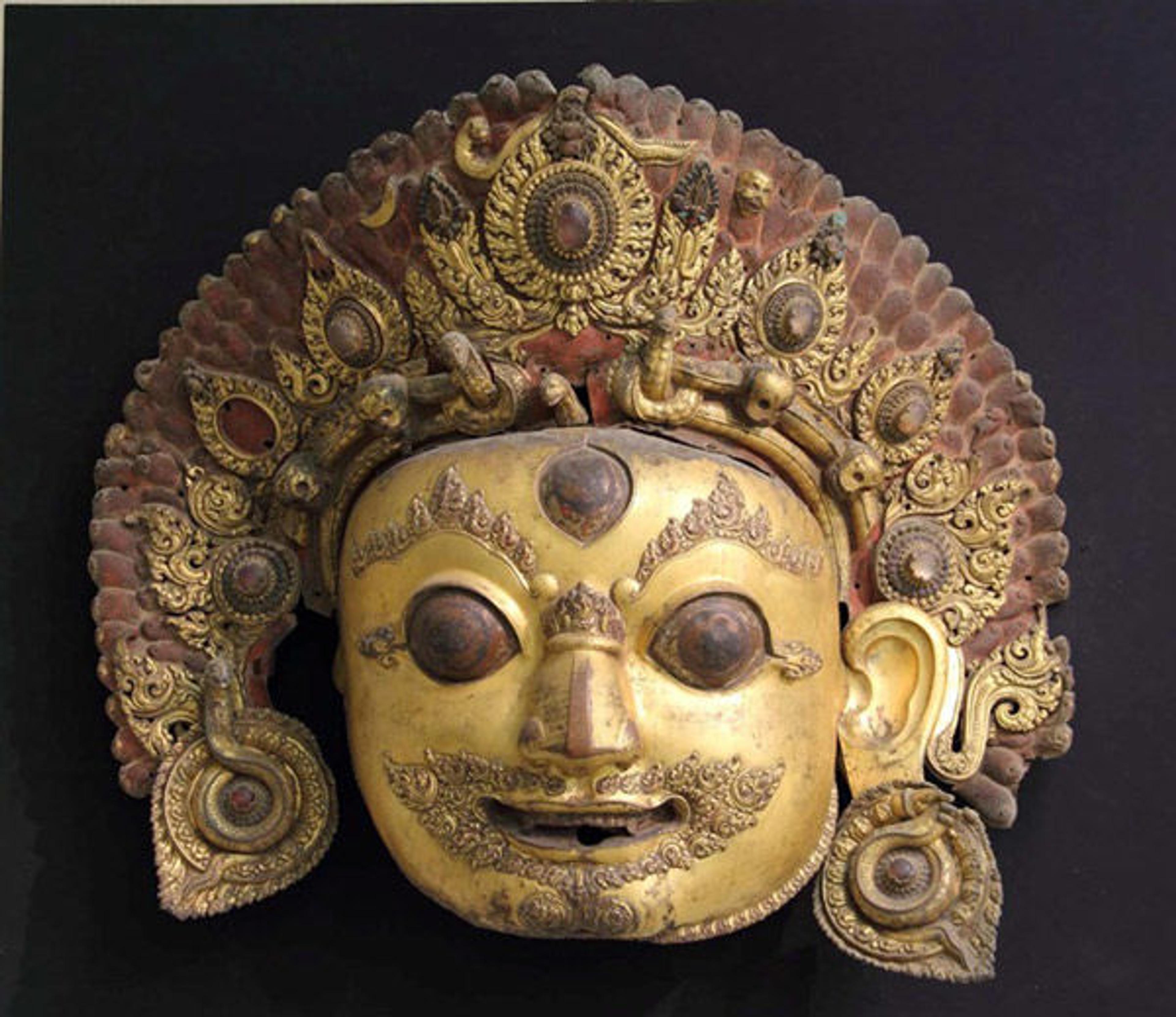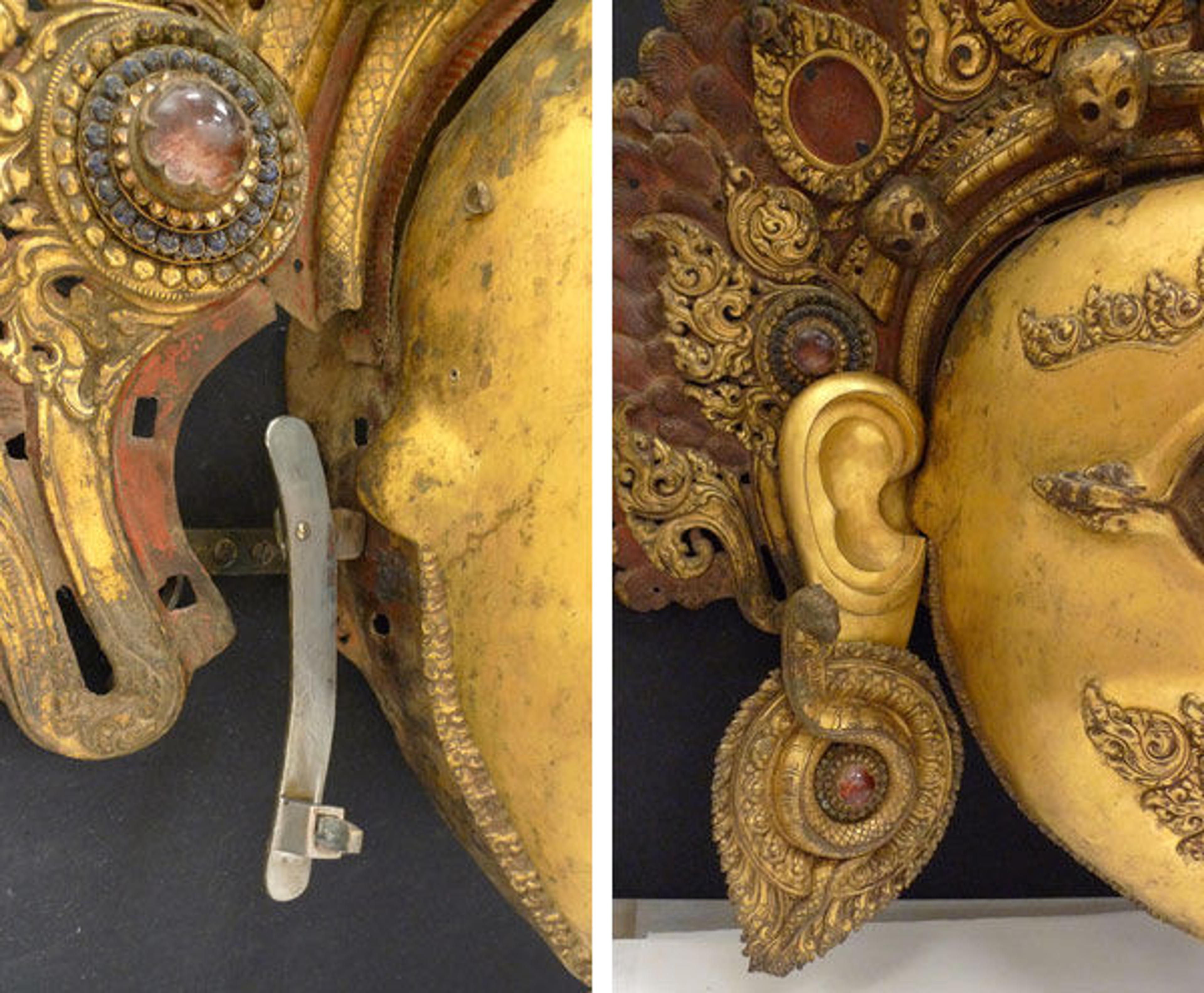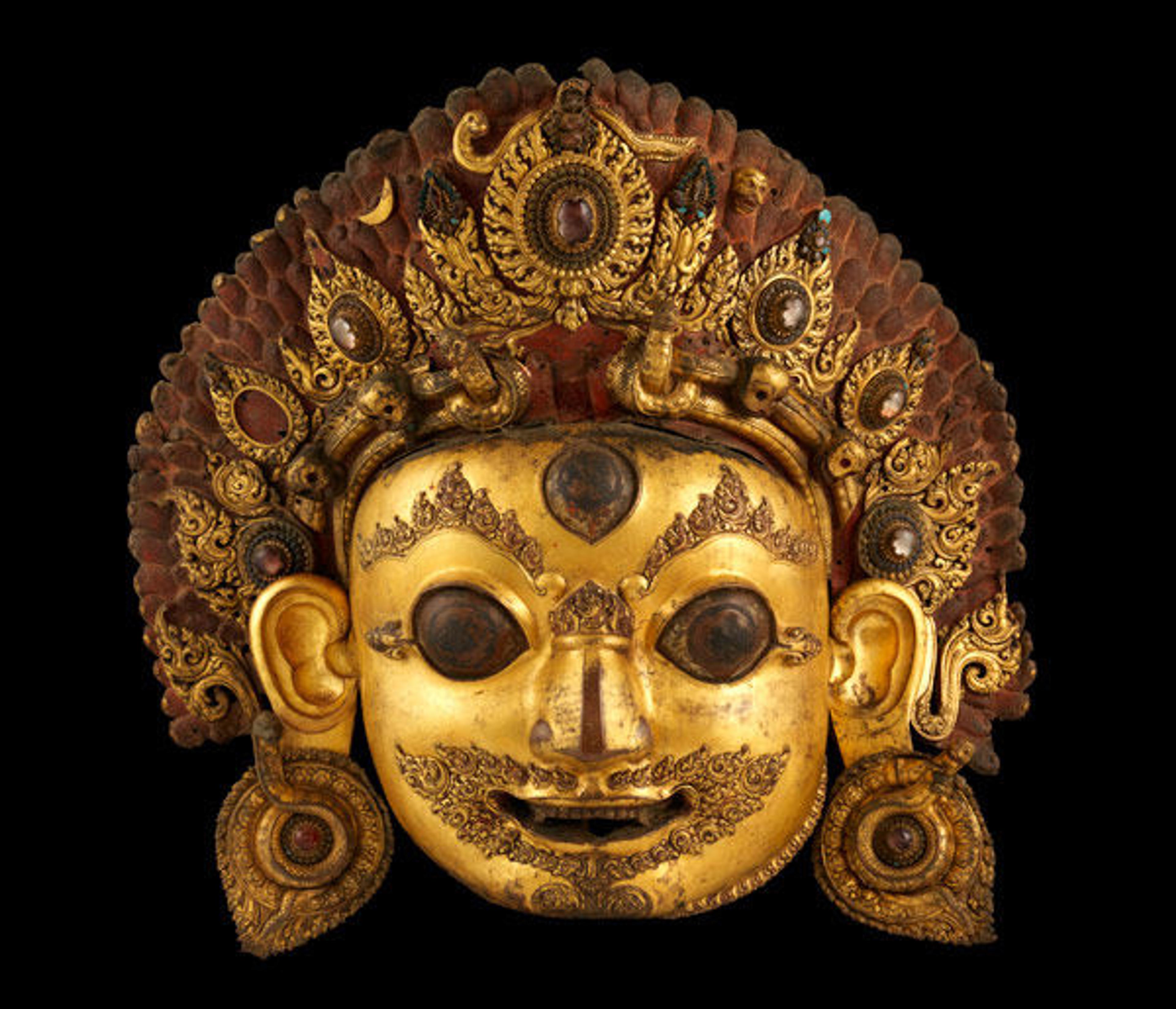
Head of Bhairava (before conservation), 16th century. Nepal, Kathmandu Valley, Malla period. Gilt copper with rock crystal and paint; H. 32 in. (81.3 cm); W. 36 in. (91.4 cm); D. 14 in. (35.6 cm). The Metropolitan Museum of Art, New York, Gift of Zimmerman Family Collection, 2012 (2012.444.2). Image courtesy of the author
«In 2012, this imposing Bhairava's mask came to the Museum as a part of an important donation from The Zimmerman Family Collection, and it is now on display in the newly renovated gallery 252. The sixteenth-century gilt and polychrome copper mask of Bhairava from Nepal had a significant loss to its appearance—its right ear was missing, and its attribute, a large copper pendant earring for the left ear, had been used as a substitute.»
Newari metalworkers native to the Kathmandu Valley—famous throughout the Himalayan world for their skills in working copper—made the monumental wrought head. The head is worked in repoussé copper with heavily applied mercury-amalgam gilding to the face, consistent with Nepalese repoussé copper objects.
Bhairava's hair—treated as an aureole of dancing flame—is painted red, and flames emit from his mouth, eyes, eyebrows, and chin. Other details such as his eyes and teeth were also enhanced and highlighted with black, white, and red. Many inlaid ornaments decorate the head over an elaborate diadem of skulls, and a snake head is used to compensate the obvious loss of a central figure, commonly seen on other examples. Swirling snakes form his large pendant earrings.
Since the missing right ear disrupted the whole expression of the mask, reconstruction was required in preparation for exhibition. The decision was carried out in discussions with John Guy, Florence and Herbert Irving Curator of the Arts of South and Southeast Asia, and in the case of Bhairava's mask, the object's cultural significance called for the restoration of its original expression and character.
With the decision to make the replacement out of a different material, the first step was to create a prototype in modeling clay based on the original left ear. For the replica to be accurate, we judged the dimensions of each form and confirmed them by taking measurements.

A clay model of the original left ear shown in a fitting test. Image courtesy of the author
When the clay ear was finally modeled to visual satisfaction, it was time to make the final replica. We first created a mold of the clay model using a flexible and resistant two-part material.

The dental silicone-rubber mold and the clay model used to create it. Image courtesy of the author
We then used several criteria to evaluate suitable casting materials for the final product. Since the reproduction would be in close contact with the copper mask, we needed to select a material without chemical components that could accelerate copper corrosion in the short and long term. We also considered the weight and strength of the material because the reproduction would have to bear the large copper pendant earring.
In order to assess the extent of off-gassing in materials to be used for display and storage of artworks, an accelerated-corrosion screening method called an "Oddy test" is typically carried out. The procedure involves enclosing the sample material in a test vessel together with (not in contact with) metal coupons under conditions of elevated temperature and humidity. The Museum's Department of Scientific Research carried out Oddy tests on three selected materials. One of the tested materials, Epoxy resin Epo-Tek 301-2, was deemed suitable for the final reproduction as it proved to be stable under the harsh test conditions, and its chemical components did not affect any of the metal coupons.
The replica was then madein a cohesive putty-like consistency mixed with glass micro-balloons—tiny hollow microspheres used as a bulking agent and pushed into the mold. To increase the strength of the cast, a thin layer of polyester conservation fabric was added in the last layers. When perfectly dry (after about three days), the ear was taken out of the mold.

The replica in its cast next to the glass micro-balloons that were used as a bulking agent. Image courtesy of the author
The surface of the new replica was prepared to receive its final finish. A red-toned acrylic paint was applied as an underlayer to mimic the color of the exposed oxidized copper, and a metallic finish was achieved through superimpositions of metal leaf and gold leaf.

The application of metal leaf to the replica ear. Image courtesy of the author
The evocation of ancient wear was accomplished after giving the surface a final patina—a complex layering process to get a satisfactory finish. Finally, adding the necessary degree of luster to match the original surface served as the final touch to the replica.
For the last stage of the treatment, we had a collaborative discussion with Conservation Preparator Matthew Cumbie to find a minimally invasive and reversible method of mounting the ear onto the mask. The least invasive approach was not to attach the ear directly to the mask, and instead, secure a brass attachment on the modern wood support on the reverse of the mask itself. The earring was secured to the brass attachment mount so that it appears to go through the pierced ear.

Bhairava mask before and after adding the reproduction. Images courtesy of the author
The multidisciplinary work required for the restoration of Bhairava's ear addressed basic questions in conservation and conservation ethics by sorting through a variety of practical requirements to bring back the integrity of the mask's wrathful expression.

The head of Bhairava after conservation